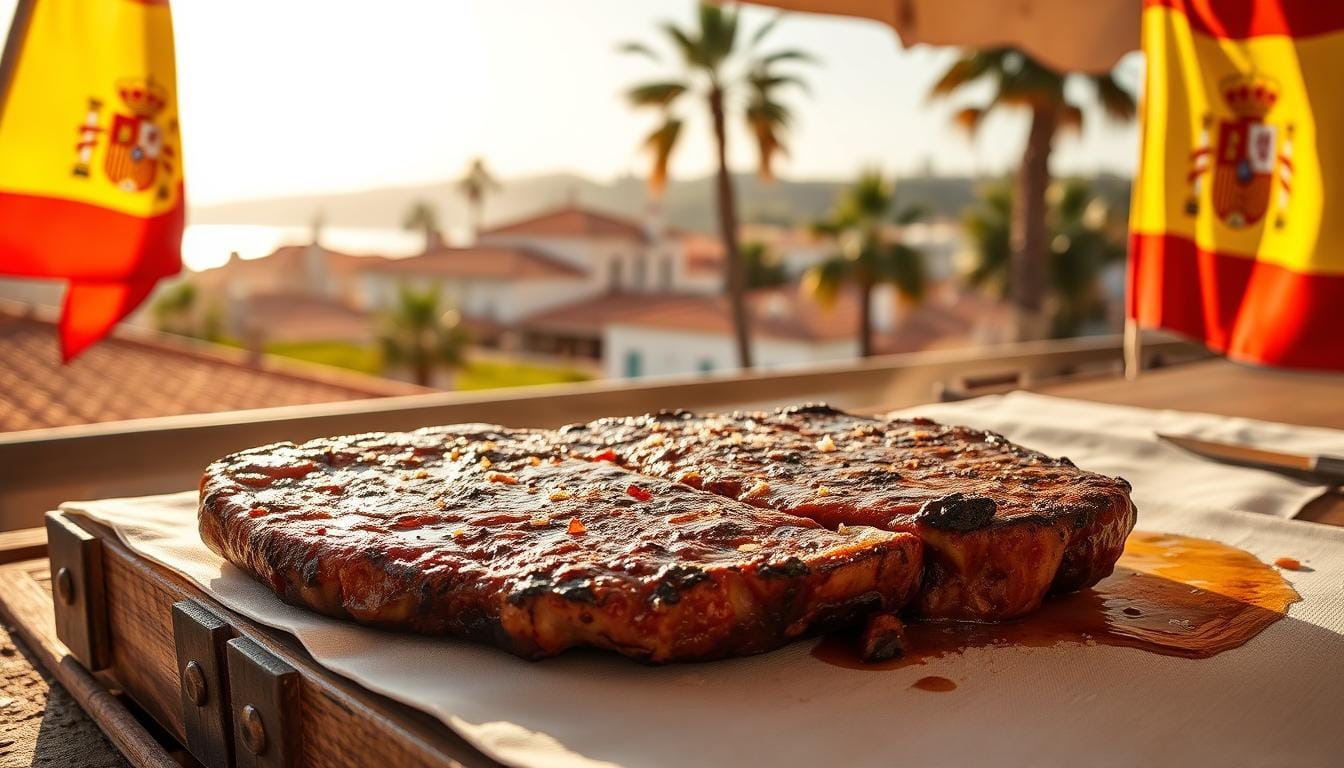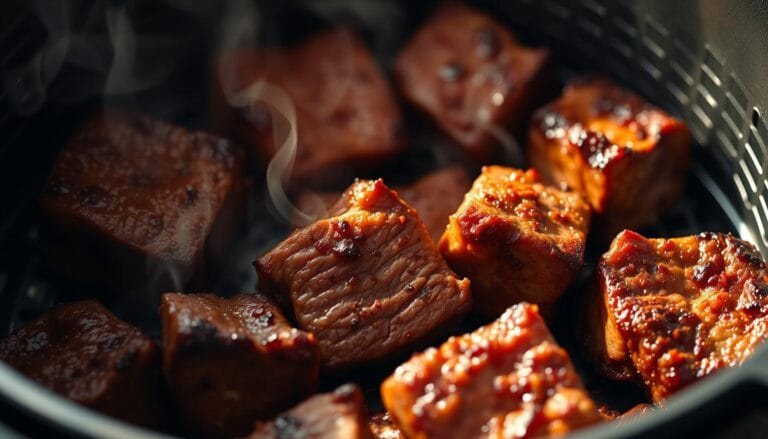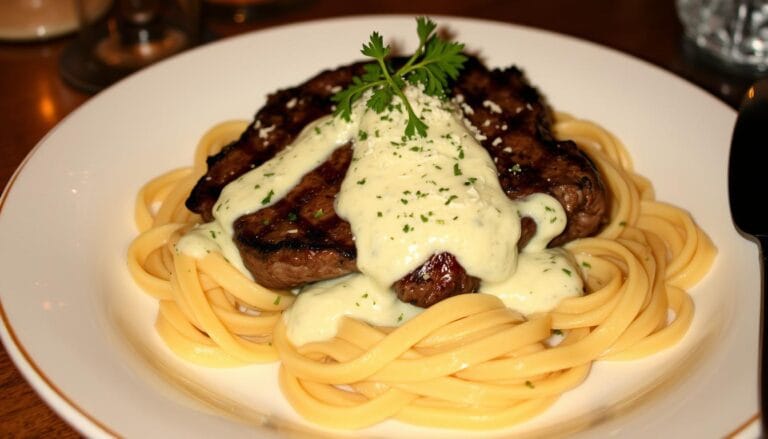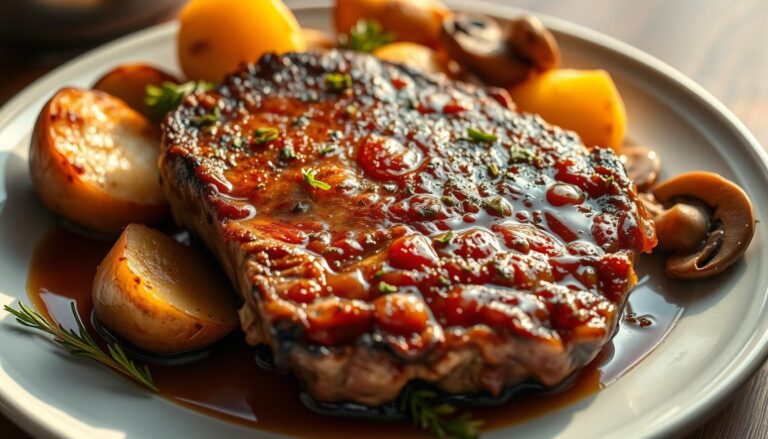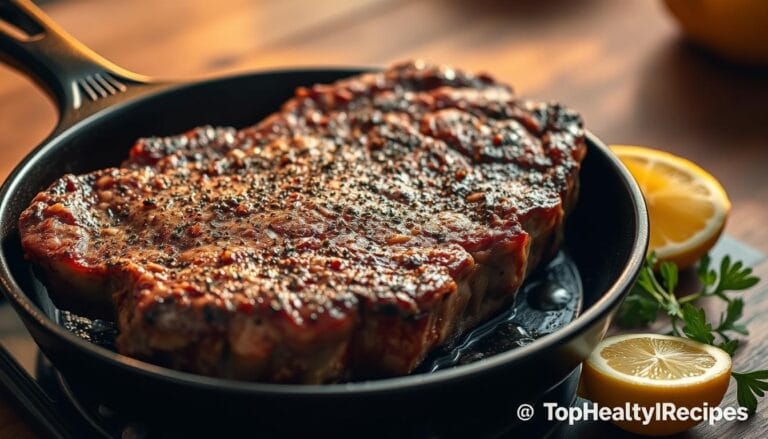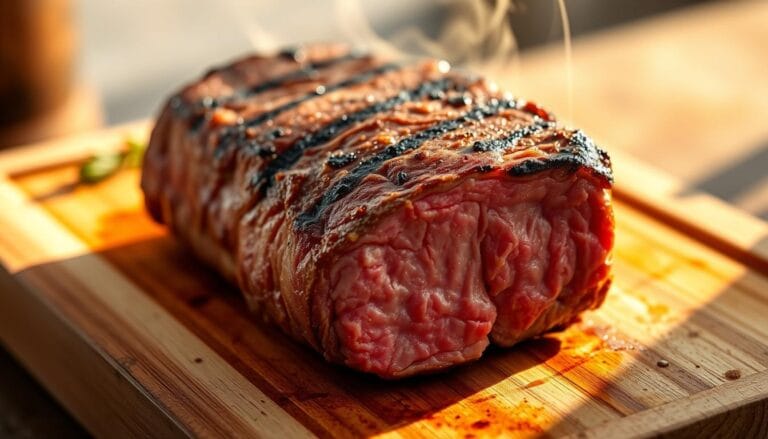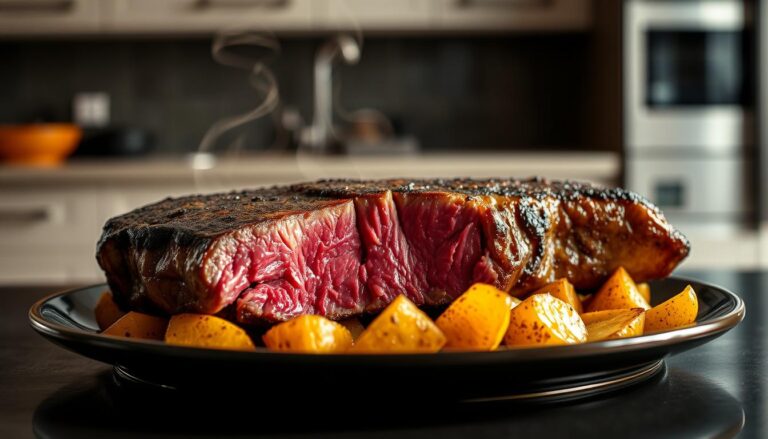Steak Spanish Translation: How to Say Steak in Spanish
Table of Contents
Steak Spanish Translation: How to Say Steak in Spanish
Imagine walking into a restaurant in a Spanish-speaking country and being able to order your favorite dish with confidence. For food lovers and travelers, being able to communicate effectively is key to enjoying the local cuisine. One of the essential words to know is “steak.”
In Spanish, there are multiple ways to say “steak,” and understanding these variations can enhance your dining experience. Whether you’re in Spain or Latin America, knowing the right terminology can make a big difference.
From “el bistec” to “el churrasco,” the various translations of “steak” reflect the rich culinary traditions across the Spanish-speaking world. In this guide, we’ll explore the different ways to say “steak” in Spanish, helping you to navigate menus and order like a local.
Key Takeaways
- Multiple translations for “steak” exist in Spanish, including regional variations.
- Understanding these variations is crucial for effective communication while dining.
- Regional differences impact the terminology used for “steak” in Spanish.
- Learning food vocabulary enhances your language skills and dining experience.
- Pronunciation tips and gender rules are essential for accurate communication.
The Main Spanish Words for Steak
The Spanish language offers several ways to refer to steak, each with its nuances and regional variations. Understanding these terms can enhance your ability to order and discuss steak in Spanish-speaking environments.
El Bistec – The Most Common Translation
“El bistec” is the most widely recognized translation for steak across most Spanish-speaking countries. It is a masculine noun derived from the English word “beefsteak,” adapted to Spanish pronunciation and spelling. When learning Spanish, it’s crucial to understand that “bistec” is masculine, affecting how you use articles and adjectives. For example, “Whenever we go to a restaurant, he orders a 20-ounce steak” translates to “Cada vez que vamos a un restaurante, él pide un bistec de 20 onzas.”
- “El bistec” is considered the standard translation in many Spanish dictionaries.
- It’s essential for proper grammar usage when discussing steak.
El Filete – Another Popular Term
“El filete” is another common term for steak, often used for thinner cuts or fish steaks. Like “bistec,” it is a masculine noun. The versatility of “filete” means it can refer to various meat cuts or fish steaks, making context important for accurate understanding.
- “El filete” can sometimes refer to specific cuts or styles of steak.
- Understanding the context is key to using “filete” correctly.
Regional Variations of Steak in Spanish
The term ‘steak’ has multiple translations in Spanish, reflecting the rich culinary diversity across Spanish-speaking countries. Understanding these variations can enhance your learning experience and cultural competence.
El Bife – South American Term
“El bife” is a commonly used term in South American countries, especially in Argentina, Uruguay, and parts of Bolivia. It’s a masculine noun closely associated with the renowned Argentine steakhouses.
La Carne de Res – Southern Cone Usage
In the Southern Cone, “la carne de res” is used to refer to steak. This feminine noun phrase literally translates to “beef meat,” highlighting the importance of understanding Spanish noun gender.
El Churrasco – Another Regional Variation
“El churrasco” refers to a specific style of grilled steak popular in Brazil and other South American countries. This term showcases how food terminology can cross linguistic and cultural borders.
| Term | Region | Gender |
|---|---|---|
| El Bife | South America (Argentina, Uruguay, Bolivia) | Masculine |
| La Carne de Res | Southern Cone | Feminine |
| El Churrasco | Brazil and South America | Masculine |
Understanding Steak Spanish Translation in Context
The translation of steak into Spanish involves not just knowing the word, but also understanding its context and grammatical usage. When discussing steak, you’re dealing with nouns that have gender, which affects the articles and adjectives used.
Gender and Grammar Rules
In Spanish, nouns are either masculine or feminine, and this gender affects sentence structure. Most terms for steak are masculine, such as el bistec, el filete, el bife, and el churrasco. However, la carne de res is feminine. Understanding these gender rules is crucial for correct sentence formation.
| Spanish Term | Gender | Article |
|---|---|---|
| Bistec | Masculine | El |
| Filete | Masculine | El |
| Bife | Masculine | El |
| Carne de res | Feminine | La |
| Churrasco | Masculine | El |
Pronunciation Guide
Pronunciation of steak terms varies slightly across regions, but here are the general guidelines: bistec is pronounced as bee-STEK, filete as fee-LE-te, bife as BEE-fe, carne de res as KAR-ne de res, and churrasco as choo-RAS-ko. Mastering these pronunciations will help you be understood when ordering steak.
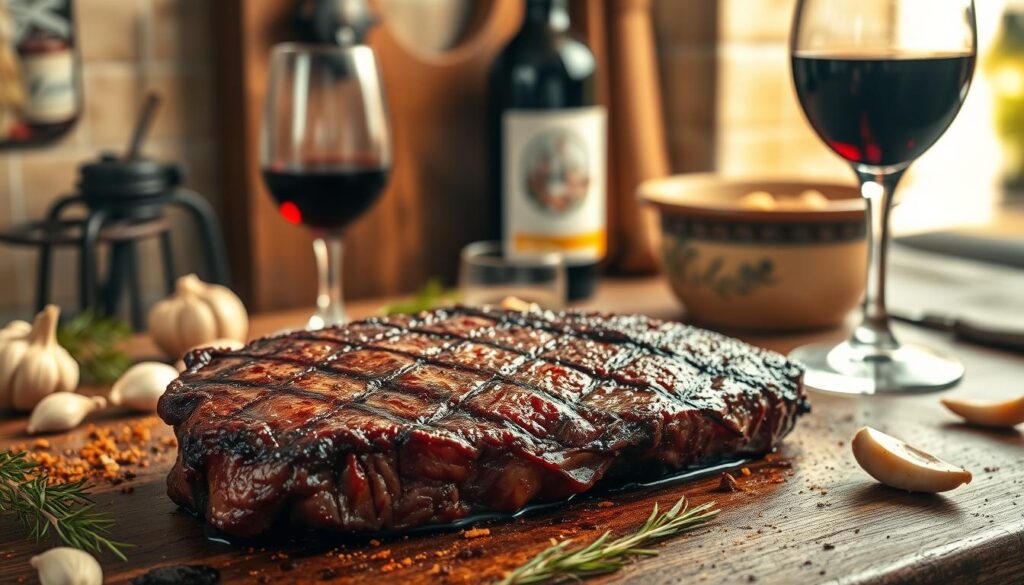
Common Phrases and Expressions with Steak
To fully enjoy steak in Spanish-speaking countries, it’s essential to learn key phrases and expressions. This knowledge will not only enhance your dining experience but also show respect for the local culture.
Ordering Steak in Restaurants
When ordering steak in a Spanish restaurant, you can say “Me gustaría un bistec, por favor” (I would like a steak, please) or “¿Me puede traer un filete?” (Can you bring me a steak?). Using these expressions will help you navigate menus and communicate your preferences effectively.
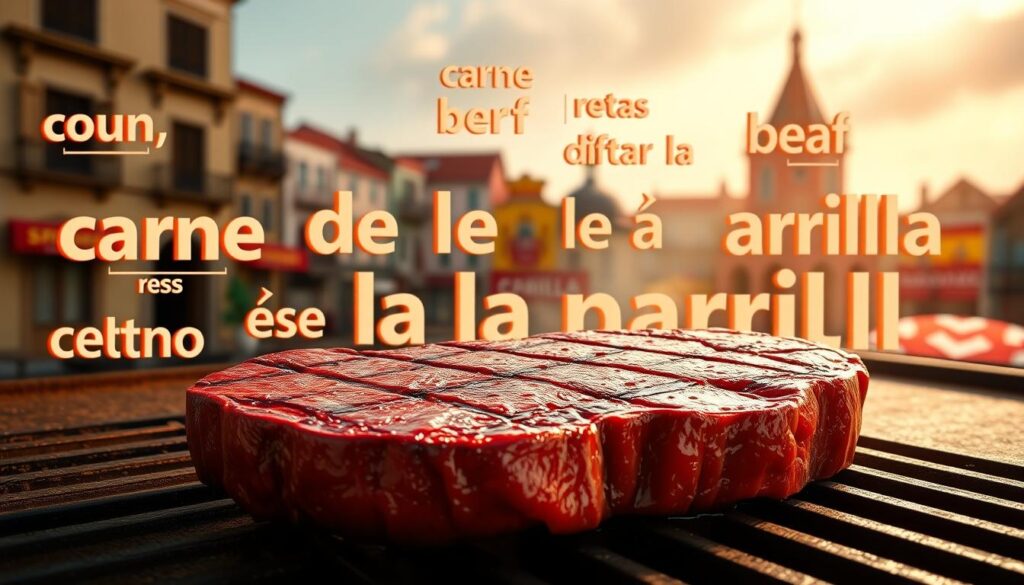
Describing How You Want Your Steak Cooked
To specify how you want your steak cooked, use terms like “poco hecho” or “vuelta y vuelta” for rare, “término medio” for medium, and “bien hecho” for well-done. Understanding these cooking terms is crucial as preferences for steak doneness vary across the Spanish-speaking world.
Popular Steak Dishes in Spanish
Popular steak dishes in Spanish-speaking countries include “bistec a la mexicana” (Mexican-style steak), “bistec encebollado” (steak with onions), and “bistec empanizado” (breaded steak). Familiarizing yourself with these dishes will help you explore the diverse world of Spanish cuisine.
Conclusion
Understanding the different translations for steak in Spanish opens doors to new cultural experiences. Mastering terms like “bistec,” “filete,” and “churrasco” enhances your language skills and dining experiences. Remember, Spanish nouns have gender, and most steak terms are masculine. Expanding your food vocabulary beyond basic terms will open up new connections with native speakers. With these terms, you’re well-equipped to enjoy culinary adventures throughout the Spanish-speaking world.
FAQ
What is the most common way to say “steak” in Spanish?
Are there regional variations in how to say “steak” in Spanish?
How do you order steak in a Spanish-speaking restaurant?
What are some popular steak dishes in Spanish cuisine?
How do Spanish nouns like “bistec” work in terms of gender and grammar?
Can you provide a pronunciation guide for “bistec”?
For more cooking tips, stay connected with us. We also recommend the cookbook Skinnytaste Simple: Easy, Healthy Recipes with 7 Ingredients or Fewer
For more Recipes about Beef?
Did You try our recipe ?
There are no reviews yet. Be the first one to write one.
